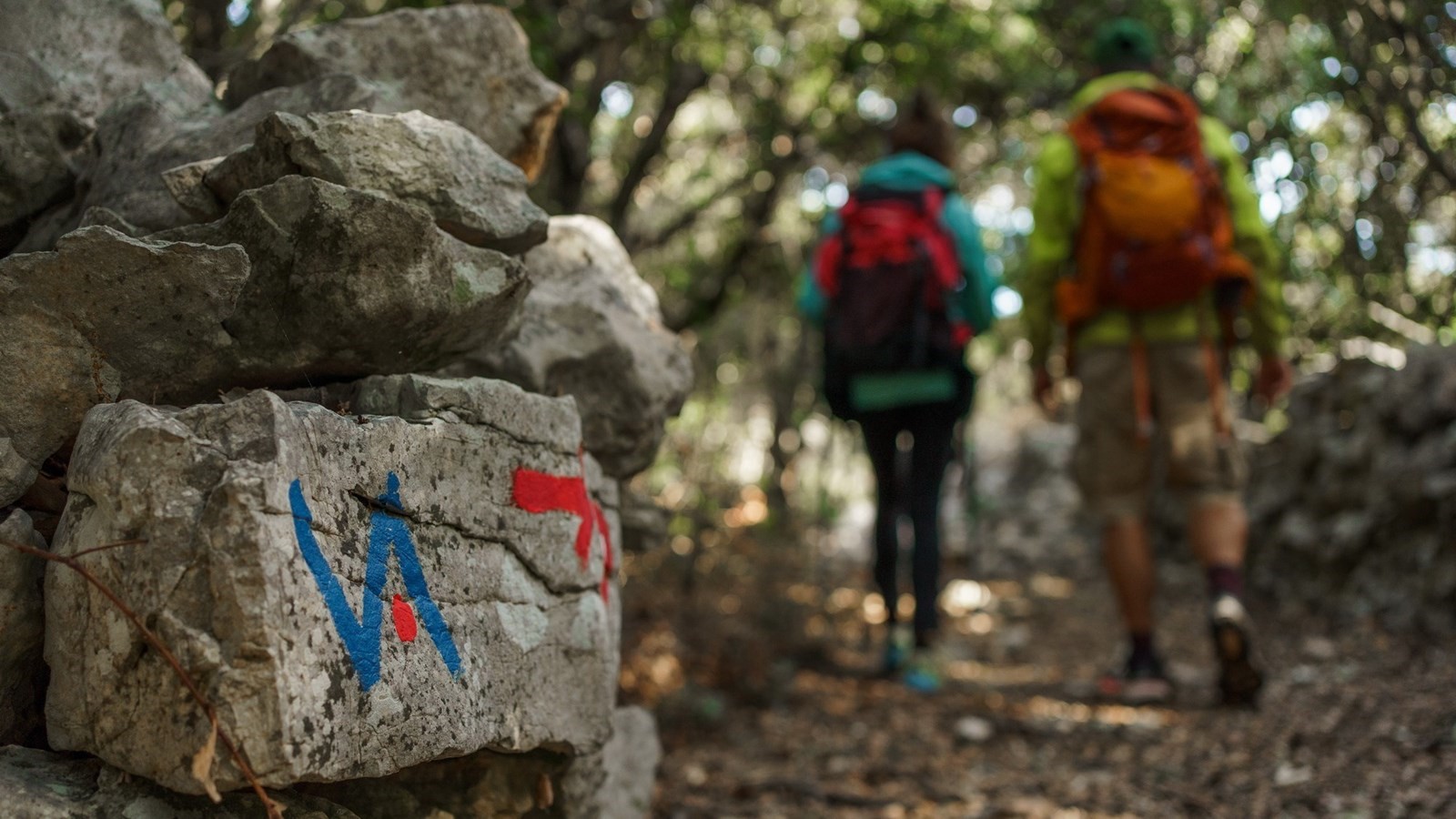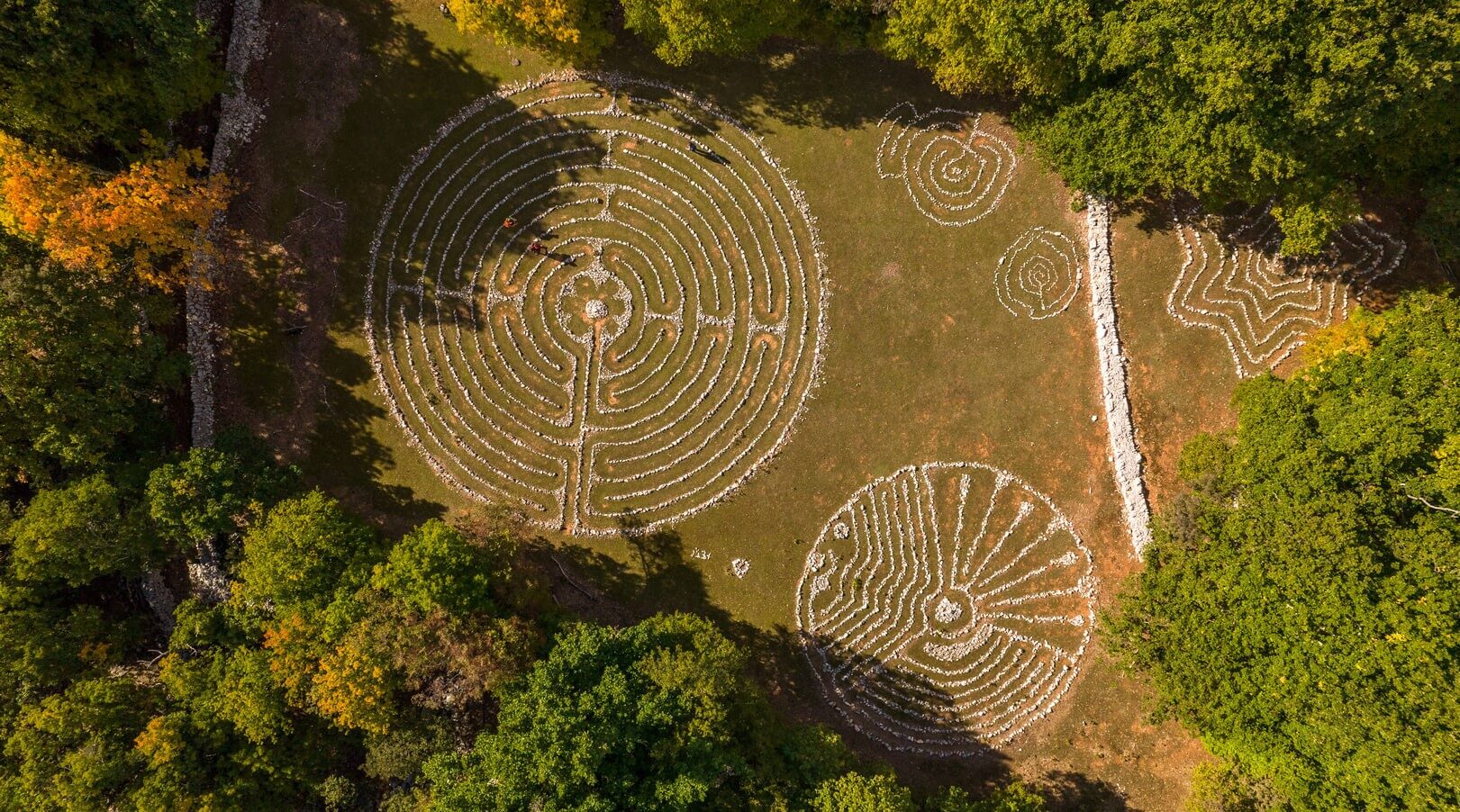Trail name and description
- VA Via Apsyrtides
- From Cape Jablanac; 45.17513, 14.32246 to Cape Radovan; 44.44139, 14.57888
Level & Scale of difficulty used for hiking
Difficulty varies among stages from T to E (For more info have a look here)
Duration
Each stage takes about 4h. Find more information about each stage difficulty and length on the official Via Apsyrtides Site.
Distance
The trail is 149 kilometers long, passing 4000 m of elevation in total. It is separated into eleven stages with varying degrees of difficulty. The trail contains 75 kilometers of educational paths, that stretch through historic network of trails, that were renovated as a part of the VALUE project implemented within the Cross-border cooperation program Interreg Italy – Croatia 2014-2020.1
Refreshing points
Water is available on many locations along the trail, but make sure to take enough water supply for the whole day of hiking.
Shelters
St. Gaudentius shelter (Planinarski dom Sveti Gaudent) (44.6952, 14.3478) is open all the time in summer (except Mondays) and by appointment: +38598403469 or +385981826150
Climate
The archipelago is surrounded by mountains and Kvraner bay, which constitutes to its pleasant, if a bit windy climate. Northeast wind called bora may be especially strong in the north of island Cres, but the climate is still warm and temperate.
Best period for hiking
Although climate conditions may be challenging at times, simple forecast check should do the work – the trail is most enjoyable in the summer and late spring, as the local winds are lighter in these seasons.
how to reach the starting point
By bus: you can reach the islands Cres and Lošinj by bus from Zagreb or Rijeka. Most of the smaller towns along the islands are connected by bus as the means of local transport.
By car: find more information on the link.
By boat: find more information on the link.
Via Apsyrtides is a range of trails intended for various users, from experienced climbers to tourists. There is no need for any additional professional gear.
Equipment and outfit required
All necessary equipment can be narrowed down to appropriate backpack, mountaineering boots, sufficient water and food supply.


Via Apsyrtides (marked as VA) is one of the most unique trails in Croatia, a transversal path through three Croatian islands. The trail runs from the northernmost point of island Cres (Cape Jablanac; 45.17513, 14.32246), through the full length of the islands Cres and Lošinj, all to the southernmost tip of the island Ilovik (Cape Radovan; 44.44139, 14.57888). Cres and Lošinj islands are connected with a bridge and have a boat connection to Ilovik. This archipelago was called in the ancient times “Apsyrtides”, the name originating from Greek mythology.
Cres is the largest Croatian island, and its biodiversity can be fully appreciated while traversing this trail. The island is home to over a thousand species of plants, 24 reptiles, 30 mammals, and hundreds of birds. Cres is well-known for its native griffon vultures that are unique in the world for their way of life – these birds nest right above the sea, while in all other regions around the world they nest in the mountain areas.2 All snakes in the Cres-Lošinj Archipelago are nonvenomous, but some caution is still required.
- Tramuntana Forest is the old forest of giant oaks and sweet chestnuts. Tramuntana is home to centuries-old trees over 30 meters tall and 5 meters in circumference. The walking trails of Via Apsyrtides follow the ancient ox paths built by the old artisans inhabiting the island. The trails in the forest include seven labyrinths and 21 stone sculptures.
- Rescue Centre for Griffon Vultures in Beli is where you can see and learn all about the griffon vultures – the largest birds in this part of Europe.
- Distillery of essentials oils in Martinšćica follows the centuries-old family tradition of picking and processing the island’s native medicinal herbs. The family that leads a distillery today processes a dozen types of medicinal herbs into essential oils and hydrolates, which have a worldwide-recognized quality. To visit the distillery, contact magriz.cres@gmail.com or phone number +38598715856.
- The drywalls of Cres can be seen all around Via Apsyrtides. They are a hidden treasure and a cultural heritage of Croatia. These walls are made of local stone loosely stacked without using mortar. They are the oldest form of stone construction. The stone walls dominate the island Cres and illustrate interaction between men and environment. The dry walls of Cres were put on UNESCO listing of intangible elements and are a part of the World Heritage.
- Vrana Lake is the freshwater lake on the island Cres, an original phenomenon. The lake accumulates 220 000 000 m3 of fresh water with exceptional quality, serving as the only source of drinking water for the Cres-Lošinj archipelago. The area around the lake has forbidden access as it is a water protection area.
- Dolphin watching tour in Veli Lošinj are sustainable boat tours that enable visitors to see local dolphin populations in their natural habitat and learn first-hand about the dolphins and the underwater world of Adriatic from the marine biologists and researchers. Tours are led by the Blue World, Institute of Marine Research and Conservation, an organization that leads the largest dolphin research and conservation project in the area.
Cres and Lošinj islands have a rich gastronomic offering and there are numerous restaurants to visit on the way of Via Apsyrtides. Our recommendation is to try the local Cres lamb in taverns Hibernicia in Lubenice and Bukaleta in Cres. Taste various local delicacies from meat and fish to pasta and seafood in tavern Mare in a small beautiful town Osor. Visit a Trattoria & Tartuferia Bora Bar in the small fisherman village Rovenska in the south of Lošinj.
Cres and Lošinj offer various places to stay as a part of the touristic offering. Find hotels and apartments on Booking.com and find all information about camping sites on Camps Cres Lošinj site.
Apoxyomenous is the very unique cultural attraction of island Lošinj. This bronze statue of a young athlete was found by a tourist diver in 1996 after it has spent 2000 years under the sea, at the depth of 45 metres.6 This precious statue originates from the ancient Greece and it has gone through recovery and restauration, giving it a new life. The statue has traveled the world, being exhibited in the greatest world museums and now it can be seen in its own Apoxyomenous museum in Mali Lošinj.